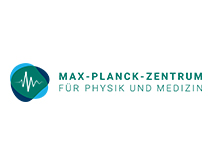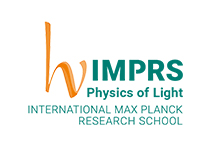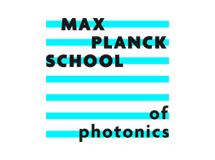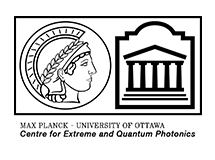Localized Phase Structures Growing Out of Quantum Fluctuations in a Quench of Tunnel-coupled Atomic Condensates
Physical Review Letters 109(8) 085304 (2012) | Journal
Direct printing of nanostructures by electrostatic autofocussing of ink nanodroplets
Nature Communications 3 890 (2012) | Journal
White-light bias external quantum efficiency measurements of standard and inverted P3HT: PCBM photovoltaic cells
JOURNAL OF PHYSICS D-APPLIED PHYSICS 45(41) 415101 (2012) | Journal
Plasmonic dimer antennas for surface enhanced Raman scattering
NANOTECHNOLOGY 23(18) 185303 (2012) | Journal
Universal quantum computation with continuous-variable Abelian anyons
PHYSICAL REVIEW A 85(5) 052325 (2012) | Journal
Filtering of the absolute value of photon-number difference for two-mode macroscopic quantum superpositions
PHYSICAL REVIEW A 86(6) 063823 (2012) | Journal
Ultrasensitive detection of a protein by optical trapping in a photonic-plasmonic microcavity
JOURNAL OF BIOPHOTONICS 5 (2012) | Journal
Optical Resonator Biosensors: Molecular Diagnostic and Nanoparticle Detection on an Integrated Platform
CHEMPHYSCHEM 13(2) 427-436 (2012) | Journal
Ultra-Low Concentration Monitoring of Catalytic Reactions in Photonic Crystal Fiber
CHEMISTRY-A EUROPEAN JOURNAL 18(6) 1586-1590 (2012) | Journal
Excitation of a nanowire "molecule" in gold-filled photonic crystal fiber
OPTICS LETTERS 37(14) 2946-2948 (2012)
Label-free detection with high-Q microcavities: a review of biosensing mechanisms for integrated devices
NANOPHOTONICS 1(3-4) 267-291 (2012) | Journal
Ultra-narrow linewidth CW sub-THz generation using GS based OFCG and n-i-pn-i-p superlattice photomixers
ELECTRONICS LETTERS 48(22) 1425-1426 (2012) | Journal
Compensation of Nonlinear Phase Noise Using the Effective Negative Nonlinearity of a Nonlinear Amplifying Loop Mirror
IEEE JOURNAL OF SELECTED TOPICS IN QUANTUM ELECTRONICS 18(2) 637-645 (2012) | Journal
Extreme supercontinuum generation to the deep UV
OPTICS LETTERS 37(5) 770-772 (2012)
Electrical circuit model of arrays of resonant elements
PHYSICAL REVIEW B 85(12) 125110 (2012) | Journal
Spray-Coating Route for Highly Aligned and Large-Scale Arrays of Nanowires
ACS NANO 6(6) 4702-4712 (2012) | Journal
Adaptive Detection of Arbitrarily Shaped Ultrashort Quantum Light States
PHYSICAL REVIEW LETTERS 109(5) 053602 (2012) | Journal
Entanglement witnesses and measures for bright squeezed vacuum
PHYSICAL REVIEW A 86(2) 022323 (2012) | Journal
Probing guided modes in a monolayer colloidal crystal on a flat metal film
PHYSICAL REVIEW B 86(19) 195145 (2012) | Journal
Entanglement of Gaussian states and the applicability to quantum key distribution over fading channels
NEW JOURNAL OF PHYSICS 14 093048 (2012) | Journal
Collecting more than half the fluorescence photons from a single ion
PHYSICAL REVIEW A 86(4) 043431 (2012) | Journal
Tools for detecting entanglement between different degrees of freedom in quadrature squeezed cylindrically polarized modes
EUROPEAN PHYSICAL JOURNAL D 66(7) 172 (2012) | Journal
Metallodielectric Hybrid Antennas for Ultrastrong Enhancement of Spontaneous Emission
Physical Review Letters 108 233001 (2012) | Journal
Spontaneous emission enhancement of a single molecule by a double-sphere nanoantenna across an interface
Optics Express 20 23331-23338 (2012) | Journal
Radial mode dependence of optical beam shifts
OPTICS LETTERS 37(6) 1044-1046 (2012)
Early stages of oxide growth in H-terminated silicon nanowires: determination of kinetic behavior and activation energy
PHYSICAL CHEMISTRY CHEMICAL PHYSICS 14(34) 11877-11881 (2012) | Journal
Molecular Gating of Silicon Nanowire Field-Effect Transistors with Nonpolar Analytes
ACS NANO 6(1) 335-345 (2012) | Journal
Polarisation-resolved near-field mapping of a coupled gold nanowire array
OPTICS EXPRESS 20(27) 28409-28417 (2012) | Journal
Optomechanical Nonlinearity in Dual-Nanoweb Structure Suspended Inside Capillary Fiber
PHYSICAL REVIEW LETTERS 109(18) 183904 (2012) | Journal
Excitation of Orbital Angular Momentum Resonances in Helically Twisted Photonic Crystal Fiber
SCIENCE 337(6093) 446-449 (2012) | Journal
Characteristics of displaced single photons attained via higher order factorial moments
NEW JOURNAL OF PHYSICS 14 105011 (2012) | Journal
Evaluation algorithms for multistep measurement of spatially varying linear polarization and phase
OPTICS LETTERS 37(19) 4140-4142 (2012)
Influence of timing jitter on nonlinear dynamics of a photonic crystal fiber ring cavity
OPTICS LETTERS 37(17) 3576-3578 (2012)
The 8th International Comparison of Absolute Gravimeters 2009: the first Key Comparison (CCM.G-K1) in the field of absolute gravimetry
METROLOGIA 49(6) 666-684 (2012) | Journal
Quadrature phase shift keying coherent state discrimination via a hybrid receiver
NEW JOURNAL OF PHYSICS 14 083009 (2012) | Journal
Nanowire Arrays in Multicrystalline Silicon Thin Films on Glass: A Promising Material for Research and Applications in Nanotechnology
NANO LETTERS 12(8) 4050-4054 (2012) | Journal
Informational completeness of continuous-variable measurements
PHYSICAL REVIEW A 86(5) 052123 (2012) | Journal
Reconfigurable Optothermal Microparticle Trap in Air-Filled Hollow-Core Photonic Crystal Fiber
PHYSICAL REVIEW LETTERS 109(2) 024502 (2012) | Journal
On the use of a Continuous Wave Nd:YAG Laser in the Generation of Random Numbers
LASERS IN ENGINEERING 22(3-4) 197-208 (2012)
Generation of a wave packet tailored to efficient free space excitation of a single atom
EUROPEAN PHYSICAL JOURNAL D 66(7) 190 (2012) | Journal
Intermodal stimulated Raman scattering in hydrogen-filled hollow-core photonic crystal fiber
JOURNAL OF THE OPTICAL SOCIETY OF AMERICA B-OPTICAL PHYSICS 29(7) 1563-1568 (2012)
Spectral properties of high-gain parametric down-conversion
OPTICS EXPRESS 20(7) 7507-7515 (2012) | Journal
Far field spectrum in surface plasmon-assisted Young's double-slit interferometer
OPTICS COMMUNICATIONS 285(24) 4811-4815 (2012) | Journal
Superbunched bright squeezed vacuum state
OPTICS LETTERS 37(11) 1919-1921 (2012)
Limits on the deterministic creation of pure single-photon states using parametric down-conversion
PHYSICAL REVIEW A 85(2) 023829 (2012) | Journal
Nonreciprocal behavior and switching in optical couplers with longitudinally varying coupling coefficient
OPTICS LETTERS 37(10) 1772-1774 (2012)
Influence of the contacting scheme in simulations of radial silicon nanorod solar cells
MATERIALS SCIENCE AND ENGINEERING B-ADVANCED FUNCTIONAL SOLID-STATE MATERIALS 177 (2012) | Journal
Plasma-Induced Asymmetric Self-Phase Modulation and Modulational Instability in Gas-Filled Hollow-Core Photonic Crystal Fibers
PHYSICAL REVIEW LETTERS 109(11) 113902 (2012) | Journal
Optical Gap solitons and Truncated Nonlinear Bloch Waves in Temporal Lattices
PHYSICAL REVIEW LETTERS 109(9) 093903 (2012) | Journal
Far-Field Imaging for Direct Visualization of Light Interferences in GaAs Nanowires
NANO LETTERS 12(10) 5412-5417 (2012) | Journal
Fission of solitons in continuous-wave supercontinuum
OPTICS LETTERS 37(24) 5217-5219 (2012)
Visualizing the quantum interaction picture in phase space
EUROPEAN JOURNAL OF PHYSICS 33(5) 1367-1381 (2012) | Journal
Generation and Characterization of Multimode Quantum Frequency Combs
PHYSICAL REVIEW LETTERS 108(8) 083601 (2012) | Journal
Development of Broadband Cavity Ring-Down Spectroscopy for Biomedical Diagnostics of Liquid Analytes
ANALYTICAL CHEMISTRY 84(13) 5489-5493 (2012) | Journal
Polarization-Entangled Light Pulses of 10(5) Photons
PHYSICAL REVIEW LETTERS 109(15) 150502 (2012) | Journal
Role of spatial coherence in Goos-Hanchen and Imbert-Fedorov shifts: reply to comment
OPTICS LETTERS 37(6) 1057-1057 (2012)
Optomechanical Self-Channeling of Light in a Suspended Planar Dual-Nanoweb Waveguide
PHYSICAL REVIEW LETTERS 108(9) 093903 (2012) | Journal
Kagome hollow-core photonic crystal fiber probe for Raman spectroscopy
OPTICS LETTERS 37(21) 4371-4373 (2012)
Nonlinear fiber-optic strain sensor based on four-wave mixing in microstructured optical fiber
OPTICS LETTERS 37(5) 794-796 (2012)
Resonant metamaterials for contrast enhancement in optical lithography
OPTICS EXPRESS 20(18) 19928-19935 (2012) | Journal
Tunable modulational instability sidebands via parametric resonance in periodically tapered optical fibers
OPTICS EXPRESS 20(22) 25096-25110 (2012) | Journal
Numerical Solution and Experimental Validation of the Drawing Process of Six-Hole Optical Fibers Including the Effects of Inner Pressure and Surface Tension
JOURNAL OF LIGHTWAVE TECHNOLOGY 30(9) 1306-1311 (2012) | Journal
Field-Effect Transistors Based on Silicon Nanowire Arrays: Effect of the Good and the Bad Silicon Nanowires
ACS APPLIED MATERIALS & INTERFACES 4(8) 4251-4258 (2012) | Journal
Measurement of two-mode squeezing with photon number resolving multipixel detectors
OPTICS LETTERS 37(14) 2829-2831 (2012)
Goos-Hanchen and Imbert-Fedorov shifts: a novel perspective
NEW JOURNAL OF PHYSICS 14 013058 (2012) | Journal
Quantum polarization tomography of bright squeezed light
NEW JOURNAL OF PHYSICS 14 085002 (2012) | Journal
Dynamics of optomechanical spatial solitons in dual-nanoweb structures
PHYSICAL REVIEW A 86(1) 013830 (2012) | Journal
Three-dimensional quantum polarization tomography of macroscopic Bell states
PHYSICAL REVIEW A 85(2) 022126 (2012) | Journal
Grain structure of thin-film silicon by zone melting recrystallization on SiC base layer
JOURNAL OF CRYSTAL GROWTH 357 20-24 (2012) | Journal
Probabilistic cloning of coherent states without a phase reference
PHYSICAL REVIEW A 86(1) 010305 (2012) | Journal
Rare-earth ion doped TeO2 and GeO2 glasses as laser materials
PROGRESS IN MATERIALS SCIENCE 57(8) 1426-1491 (2012) | Journal
Resonant modulational instability and self-induced transmission effects in semiconductors: Maxwell-Bloch formalism
PHYSICAL REVIEW B 85(7) 075201 (2012) | Journal
Narrow-bandwidth high-order harmonics driven by long-duration hot spots
NEW JOURNAL OF PHYSICS 14 063036 (2012) | Journal
Analytical expansion of highly focused vector beams into vector spherical harmonics and its application to Mie scattering
PHYSICAL REVIEW A 85(6) 063825 (2012) | Journal
Quantum stabilizer codes embedding qubits into qudits
PHYSICAL REVIEW A 86(2) 022308 (2012) | Journal
Microfluidic integration of photonic crystal fibers for online photochemical reaction analysis
OPTICS LETTERS 37(11) 1952-1954 (2012)
Observation of Orbital Angular Momentum Sidebands due to Optical Reflection
PHYSICAL REVIEW LETTERS 109(11) 113602 (2012) | Journal
Intrinsically disordered proteins as molecular shields
MOLECULAR BIOSYSTEMS 8(1) 210-219 (2012) | Journal
Metrology of laser-guided particles in air-filled hollow-core photonic crystal fiber
OPTICS LETTERS 37(1) 91-93 (2012)
Photonic crystal fibre as an optofluidic reactor for the measurement of photochemical kinetics with sub-picomole sensitivity
LAB ON A CHIP 12(18) 3356-3361 (2012) | Journal
Quantum polarization characterization and tomography
NEW JOURNAL OF PHYSICS 14 115014 (2012) | Journal
Generation of a phase-locked Raman frequency comb in gas-filled hollow-core photonic crystal fiber
OPTICS LETTERS 37(21) 4362-4364 (2012)
Central-moment description of polarization for quantum states of light
PHYSICAL REVIEW A 85(5) 053835 (2012) | Journal
Dipole pulse theory: Maximizing the field amplitude from 4 pi focused laser pulses
PHYSICAL REVIEW A 86(5) 053836 (2012) | Journal
Exponentially enhanced quantum communication rate by multiplexing continuous-variable teleportation
NEW JOURNAL OF PHYSICS 14 083007 (2012) | Journal
All photons are equal but some photons are more equal than others
NEW JOURNAL OF PHYSICS 14 093051 (2012) | Journal
The role of self-trapped excitons and defects in the formation of nanogratings in fused silica
OPTICS LETTERS 37(4) 482-484 (2012)
Studying free-space transmission statistics and improving free-space quantum key distribution in the turbulent atmosphere
NEW JOURNAL OF PHYSICS 14 123018 (2012) | Journal
Classifying, quantifying, and witnessing qudit-qumode hybrid entanglement
PHYSICAL REVIEW A 85(3) 032307 (2012) | Journal





